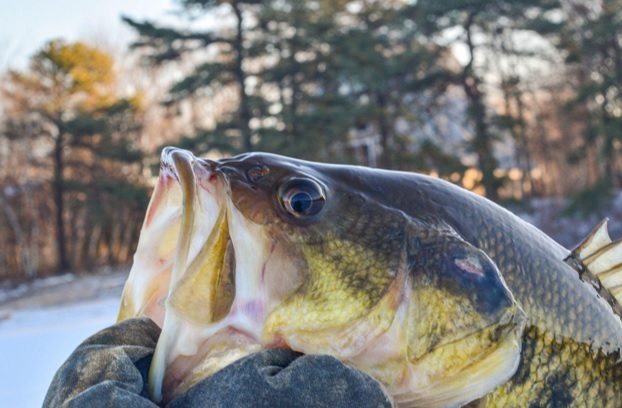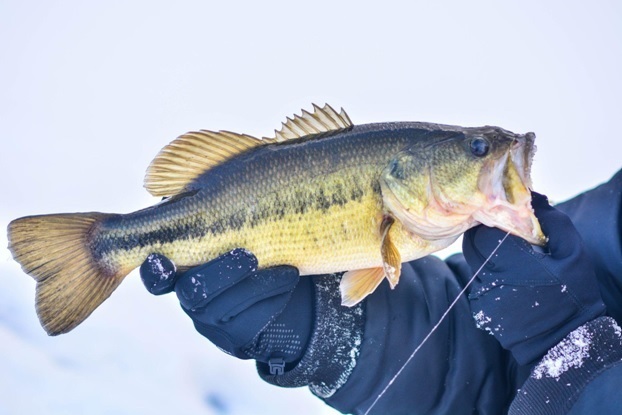Posted by Forrest on Feb 6th 2025
Cold Weather Bassin’: Not As Impossible As You Think
If you’re fortunate to be in an area of the country where your favorite fishing hole is not icebound, and you don’t spend the colder months hunting, then this is a great time to be out on the water.
There is nothing quite like a beautiful, clear, calm winter day with bright sun, even if it is a little cold.
You won’t be facing crowds, there won’t be much traffic on the water, it’s peaceful, quiet, and most importantly, you can still catch fish.
Yes, even largemouth.
While most people pursue LMB during the hotter months of the year (this is a warmwater species, after all) and the bass are generally more cooperative in the heat, there is no reason you still can’t catch them in the winter.
In fact, you definitely can. You just need to know where to look, what to do, and how to fish for them.
What Fishing Kayak Accessories Do You Need?
First things first, there are three fishing kayak accessories you’re definitely going to want in the winter.
Two are not fishing kayak accessories, necessarily, but you will still want both. One, make sure you wear wool clothing. If you get wet, it will keep you warm. The other is that you need a good, high-quality, high-visibility PFD. This is not only the case because it is a matter of law in some jurisdictions, but if you do fall into the drink and it’s cold, cold shock can take you out quickly. If you fall in and don’t have a life jacket, that is not good news.
The other is a good fish finder - which actually is a fishing kayak accessory. Since oftentimes the bass are suspended in deep water in the winter, a fish finder will help you get on top of them. Fishing for bass in the winter is not quite so easy as it is in the summer when you just cast to structure and hope for the best (which honestly usually works). Here, the electronics will help you big time.
With that said, where should you be looking for bass in the cold?
Where Are the Largemouth When the Temperatures Drop?
As a general rule, bass are going to be in deeper water in the winter. This is because deeper water usually experiences minimal shifts in temperature, and this helps insulate the bass against the cold.
Therefore, in the winter, you’ll want to target drop offs, submerged structure, and channel swings. You can also scan the lake using your fish finder, because occasionally bass will suspend in deeper water in the winter, away from structure. Your fish finder will be your best bet at finding them in that case.
Occasionally, bass will move shallower in the winter, though this is rare. Typically, this occurs on the north shores of lakes, especially if the lake bottom is dark. The reason for this is that the north shore will get more sunlight, and the dark bottom will help hold the solar energy - so sometimes, these areas are a little bit warmer than others.
Another niche tactic, on large lakes near power plants, is to target the area where warm water is discharged - in the winter, fish will absolutely flock to these areas.
So, once you get on the fish, how do you get them in the boat?

Baits and Tactics for Cold Weather Bucketmouths
As a general rule, the same baits that work in the summer for bass will work in the winter. The main difference is in sizing and how you work the lure.
One note here is to size up a bit. Fish in the cold are sluggish and they need to have a good reason to waste energy chasing bait. The bigger the bait, the bigger the mouthful and therefore the payoff for the fish.
Another note is that, no matter what lure you select, work it slowly. Again, these fish are sluggish and getting them to cooperate is tough. If you burn a bait right past a bucketmouth’s face, you might not be hearing from that fish.
So, whether you choose to fish a suspending plug, a blade bait, or a soft plastic, slow your roll. Twitch the lure as slowly as your patience will allow you to do so, and then slow down your cadence even a bit more.
Now let’s talk baits: good options in the winter include large plastics, neutral buoyancy and slightly positive buoyancy plugs, and blade baits. The two former are good because they can be worked very slowly - the other is that, especially in the case of neutral buoyancy plugs, they can be twitched and will stay right where you put them on the pause. This makes it possible to get one right in front of a bass’s face and to stop it right there, giving him plenty of time to think it over.
As for blade baits, these are effective primarily when targeting suspended bass. The name of the game here is jigging. Find the school, drop the blade (or spoon) and work it vertically. That’s your best way to get them to cooperate.
Closing Thoughts on Winter Bassin’

One final note for those of you that would brave the temperatures and pack up your tackle and fishing kayak accessories in search of winter largemouth: if you fish for food, this is the best time of year to do it. In the summer, for whatever reason, sometimes freshwater fish taste a bit muddy. In the winter, their meat is cleaner and sweeter. If you don’t believe it, try it for yourself.
Gear Up with Fishing Kayak Accessories Here
Ready to hit the water? We’re here with the tackle and fishing kayak accessories you need, so gear up. Be safe out there, and remember, even if you don’t catch anything, at least you got to spend a beautiful winter day on the water, and probably without any competition from other anglers!

